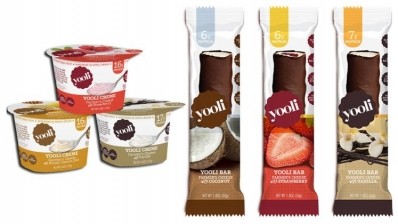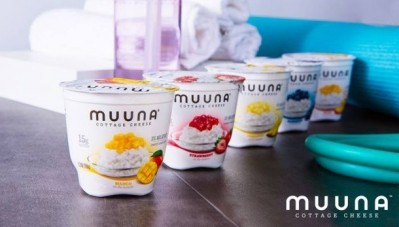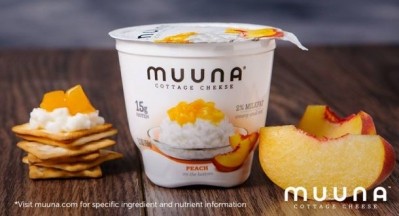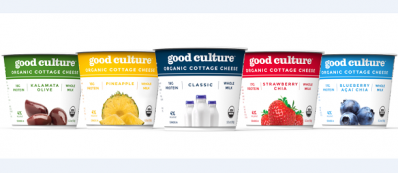Expo East
Good Culture repositions cottage cheese for on-the-go, protein focused consumers
“When we were talking to consumers initially about cottage cheese before we jumped into the space … the general response was [either] they completely loved it,” or they hadn’t eaten it since they were young because they connected it to their mom dieting or they didn’t like the texture, said Jesse Merrill, co-founder and CEO of Good Culture.
Even if consumers loved cottage cheese, some were turned off from the category because many of the products on the shelf are “loaded with stabilizers, thickeners and preservatives,” and they prefer clean, natural products, he added.
Cottage cheese also “wasn’t relevant in the daily routine” of many modern consumers because it comes mostly in large, uninspired and outdated multi-serve tubs that can be difficult to manage in today’s fast-paced culture, he said.
With all these hurdles, many entrepreneurs might have abandoned the category. But Merrill saw “an opportunity to put something on the shelf that was better – that tasted better … [and] would satisfy an on-the-go immediate consumption application.”
Good Culture emphasizes high protein, low sugar
He explains that Good Culture met this opportunity by dropping the name “cottage cheese,” which has so many negative associations, and instead positioning the dairy product as “something on the shelf that was clean label, [had] simple ingredients, high protein, low sugar and [is] nutrient dense.”
With so many positive attributes, Merrill argues the dairy product “is an overlooked superfood,” that only needed slight modifications to become relevant to consumers today.
Modern flavors for today’s consumers
Good Culture did that by updating the flavors associated with cottage cheese and its packaging.
“When people think of any kind of flavor relative to cottage cheese they generally think of pineapple or they think about peaches or cantaloupe. And we wanted to put out cottage cheese 2.0 if you will and felt that there was a big opportunity to get really disruptive if you will in terms of flavor innovation,” Merrill said.
“So, when we first launched we developed a strawberry chia, we did a blueberry acai chia – so two sweet items. We did a classic and then we did two savories. We did a sundried tomato and a Kalamata olive. So for us, savory was something that we felt was really exciting,” he explained, adding: “Cottage cheese is inherently a savory snack but you don’t see a lot of savory add-ins so we felt like this was a good opportunity to push that out there. And we are seeing some great acceptance – especially around our Kalamata olive item.”
An on-the-go option
In terms of packaging, Merrill said many of the products on the shelf were in packaging that “felt somewhat dated.”
He explained most packages are multi-serving but that Good Culture “felt like there was a big opportunity to put out a single serve, on the go package that would really be a nice fit for millennial consumers and Gen-X consumers who were on the go and have a busy lifestyle.”
The end result was an updated take on a classic that consumers consistently tell Good Culture they are embracing as part of their daily life – which also is reflected in the company’s sales growth of more than 10 times versus a year ago, Merrill said.
While Good Culture will remain “laser focused” on the cottage cheese segment for now, Merrill said down the line there are other opportunities in adjacent categories in dairy and beyond that the brand might explore.

















